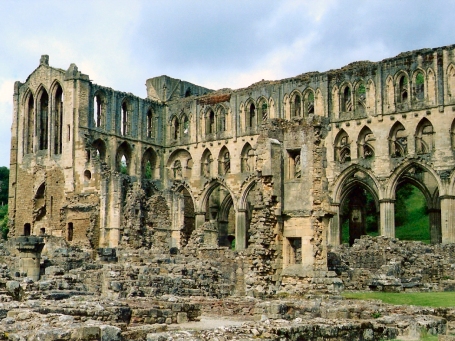
Byland Abbey was regarded in its heyday as one of the three great monasteries of northern England, alongside Rievaulx Abbey and Fountains Abbey. Starting as a monastery of the reforming order of Savignac, and founded from Furness Abbey in Cumbria, it was absorbed into the larger Cistercian order in 1147.
When the monastery was at its peak in 1231, it was mandated that the number of choir monks should not exceed eighty, and that no more lay brothers be recruited until their number had fallen below one hundred sixty. As with most abbeys, the later years of Byland saw a reduction in the number of monks, with a small number using buildings that had been designed for hundreds.
In 1322, during the era of the Scottish war of independence, when the army of King Edward II was surprised and defeated by an invading Scottish force at nearby Shaws Moor, the abbey was pillaged by the Scots. During the reformation of the mid-sixteenth century there were only twenty six occupants, who surrendered the buildings and all the abbey's property to Henry VIII's commissioners. After the monks left, the buildings were stripped of all saleable items.
View more photographs of Byland Abbey at Travels in the UK, a travelogue by the Webmaster: Byland Abbey Photo Gallery.

A monastery is a building or complex of buildings comprising the domestic quarters and workplaces of monastics, monks or nuns ...Read more at Wikipedia.

Cathedrals, as well as many abbey churches and basilicas, have certain complex structural forms that are found less often in parish churches. Read more at Wikipedia.